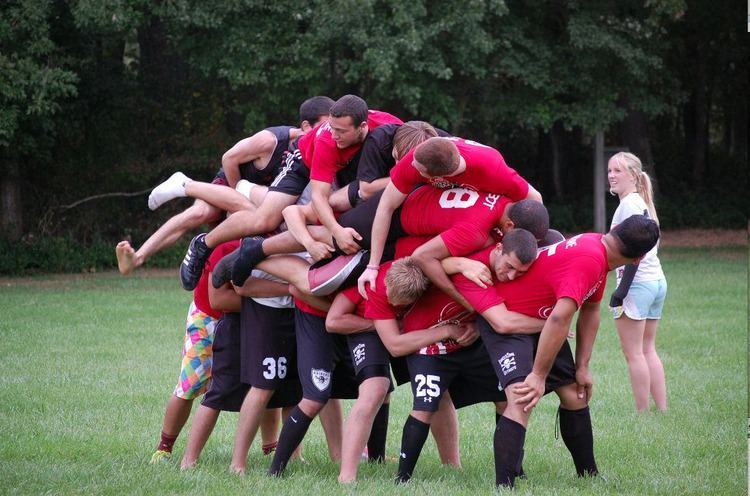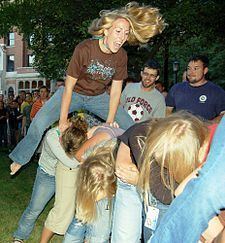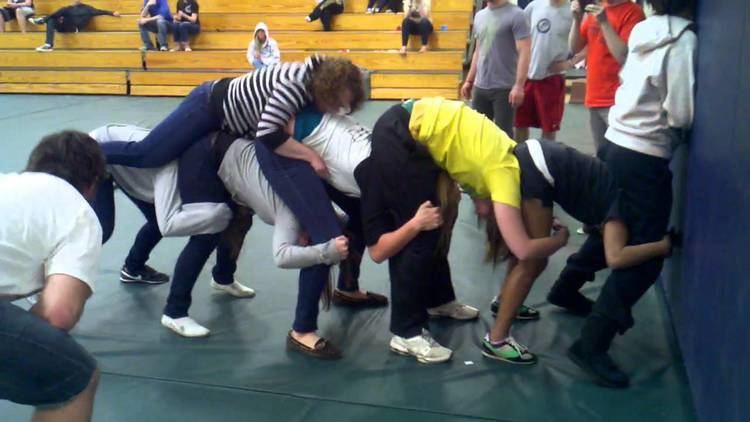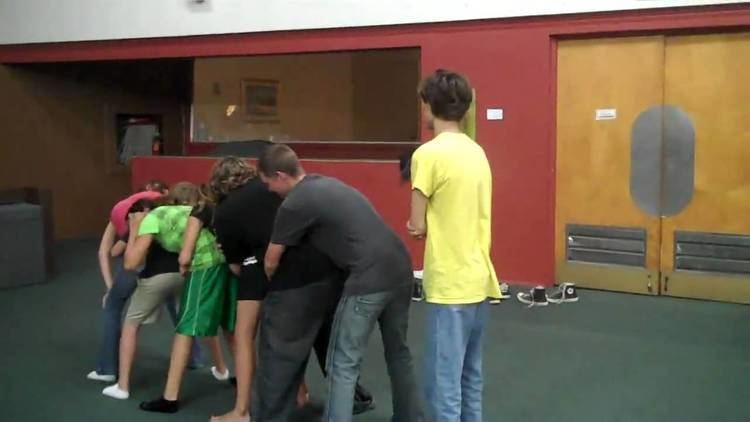 | ||
The right wayy to buck buck
Buck buck (also known as Johnny-on-a-Pony, or Johnny-on-the-Pony) is a children's game with several variants. One version of the game is played when "one player climbs another’s back" and the climber guesses "the number of certain objects out of sight." Another version of the game is played with "one group of players [climbing] on the backs of a second group in order to build as large a pile as possible or to cause the supporting players to collapse."
Contents
- The right wayy to buck buck
- Game guy plays buck buck
- Other national variants
- In popular culture
- References

As early as the 16th century, children in Europe and the Near East played Buck, Buck, which had been called "Bucca Bucca quot sunt hic?". Pieter Bruegel's painting "Children's Games" (1560) depicts children playing a variant of the game.

In the United Kingdom, the game is sometimes called High Cockalorum, but has a large number of different names in various local dialects. These include: 'Polly on the Mopstick' in Birmingham, 'Strong Horses, Weak Donkeys' in Monmouthshire, 'Hunch, Cuddy, Hunch' in west Scotland, 'Mont-a-Kitty' in Middlesbrough, 'Husky Fusky Finger or Thumb' in Nottinghamshire, 'High Jimmy Knacker' in east London, 'Jump the Knacker 1-2-3' in Watford, 'Wall-e-Acker' or 'Warny Echo' in north west London, 'Stagger Loney' in Cardiff and 'Trust' in Lancashire. The game is sometimes played in the sergeants' or officers' messes of the British Armed Forces.

Game guy plays buck buck
Other national variants

A similar game is played in South Korea (malttukbakgi)[1]. There is even a statue depicting it.[2] Malttukbakgi (말뚝박기) is a fun game, that both Korean girls and boys play up until high school. In malttukbakgi, there are two teams. Team A has one person stand up against the wall and the rest of the team have all their heads up in someone else’s butt/crotch area to form what looks like a big horse. Team B then jumps up onto the human horse one by one, each jumping with as much force as possible. If anyone from any team falls to the floor, that team loses. If everyone stays up, then the person against the wall and the person in front will play a game of gawibawibo (rock, scissor, paper) to determine the winner. It’s just a fun game that Koreans of both gender play.
Turkish game called Uzun Essek, or "Long Donkey." The person standing up is called the Pillow, or the referee. One team bends over as you see in the picture, then the other team one by one jumps on the "Donkey." If the Donkey can stand the pressure, the first person to go in the jumping team puts up one or two with his fingers. If the donkey can guess the number right, they get to jump. If the jumpers fall to the ground, donkeys turn to jump. If the donkey falls, jumpers jump again.
In popular culture
Bill Cosby's 1967 album Revenge includes a track "Buck, Buck" in which he describes playing the game as a child. He mentions that in his hometown of Philadelphia it was called "Buck Buck," while in New York City it was known as "Johnny on the Pony." This track introduces Fat Albert, "the baddest Buck Buck breaker in the world," who "weighed 2,000 pounds" and could cause earthquakes when he ran down the street. The character would later become the basis for the cartoon series Fat Albert and the Cosby Kids which includes a buck buck episode (season 1 episode 6). The same story, in a slightly different form, is also included in Cosby's book Childhood.
In the 2014 Teenage Mutant Ninja Turtles film, the heroes use a game of buck buck as an attack that is key to their defeat of the main villain.
